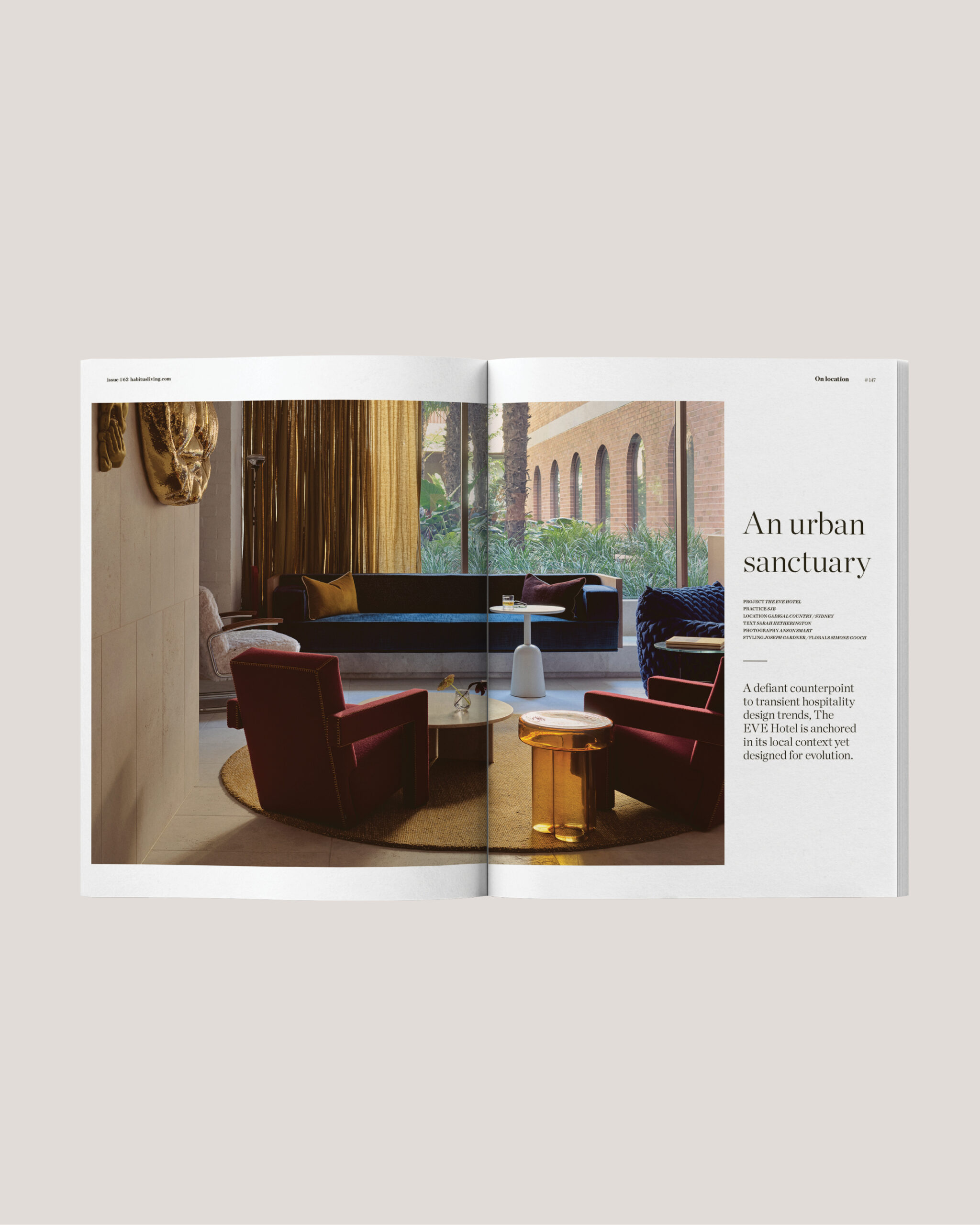Above: Andrews Pair of Rondo chairs (1956)
The innovation pervading the Australian design scene between the late 1940s and 1970s was no accident. The period marked a rebirth of creativity compared to the years preceding World War Two and the Great Depression, and quickly became defined by new, modern standards. “By the end of the 1940’s no ‘contemporary’ house was regarded as complete…without a pair of Featherston chairs before its bagged bricked fireplace,” explains designer Neil Clerehan.

Right: Featherston Aluminium shell chair (1954) Left: Featherston Stem dining chair (1969)
In line with changing social morals and a new emphasis on pop culture, mid-century furniture design turned its back on the overstuffed and ornate examples of previous decades and, in doing so, revolutionised the contemporary Australian interior.
 Featherton Dining setting at Hotel Federal exhibition (1953)
Featherton Dining setting at Hotel Federal exhibition (1953)From Grant Featherston’s plywood Contour range and Clement Meadmore’s welded steel corded chairs, distinctive of the 1950s, to Gordon Andrews’ elegant 1960s designs for home and office, Mid-Century Modern is a progressive reflection of the epoch’s cosmopolitan mode of living.

As well as showcasing more than one hundred iconic pieces by these significant figures along with other key designers such as Douglas Snelling, Fred Lowen and Schulim Krimper, the exhibition includes present recreated interior vignettes including a full-scale living room based on the 1955 Age Dream Home.
 Age Dream Home, Union Road, Balwyn (1955)
Age Dream Home, Union Road, Balwyn (1955)Alongside these seminal modern furniture pieces, Mid-Century Modern will encompass designs by visual artists such as Robert Klippel and Janet Dawson who occasionally adapted their creative skills to the production of furniture, and examples of Fred Ward’s post-war do-it-yourself Patterncraft furniture. “[The exhibition explores how] designers moved away from traditional, conservative pre-war styles and forged a new language of design that was innovative in its use of materials, functional and often imbued with a good dose of style,” explains Tony Ellwood, Victoria’s National Director.
 Meadmore Dining suite (1952)
Meadmore Dining suite (1952)Contextual material including working drawings, textiles of the period and photographs of contemporary architecture will also be included, building a rich picture of this relatively little known aspect of Australia’s design history.
Mid-Century Modern: Australian Furniture Design Exhibition
Date start: 2014-05-30
Date End: 2014-09-19
Location: The Ian Potter Centre: NGV Australia

